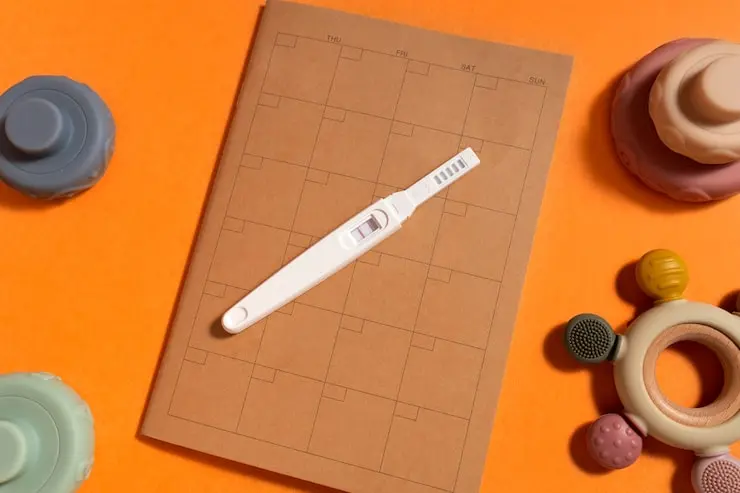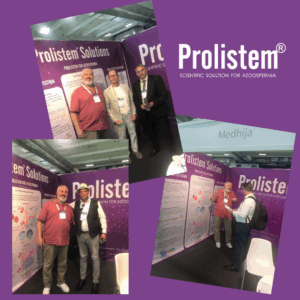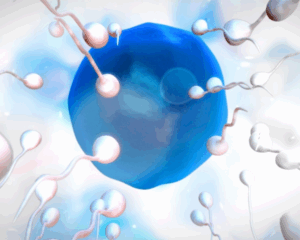
Prolistem for Non-Obstructive Azoospermia: A Comprehensive Guide
Prolistem for non obstructive azoospermia, Non-obstructive azoospermia (NOA)

Prolistem for non obstructive azoospermia, Non-obstructive azoospermia (NOA) is a significant cause of male infertility, characterized by the absence of sperm in the semen due to impaired spermatogenesis. This condition affects approximately 1% of the male population and up to 10–15% of infertile men. Traditionally, treatment options have been limited, but recent advancements have introduced new possibilities. One such innovation is Prolistem, a natural supplement designed to support sperm production in men with NOA.
Prolistem is a patented, all-natural treatment specifically developed for men with non-obstructive azoospermia (NOA). a condition in which the testicles fail to produce sperm. Unlike common fertility supplements aimed at improving sperm quality in men with low counts, Prolistem addresses the root cause of sperm production failure.
Manufactured in an FDA-registered facility in the United States, Prolistem follows strict quality and safety standards. However, as a dietary supplement, it does not require FDA approval, unlike pharmaceutical drugs. It is classified under the dietary supplement category, which is regulated differently by the FDA.
Prolistem operates through a unique two-phase treatment process:
Phase One: Temporarily lowers testosterone levels to stimulate dormant sperm cells.
Phase Two: Gradually restores testosterone to support natural sperm production.
This approach aims to reset the hormonal environment, creating optimal conditions for sperm production. The six-month program has yielded impressive success rates, with 48% of patients achieving successful outcomes. Among them, 23% had sperm detected in their semen, while 25% had successful surgical sperm extractions following the completion of the Prolistem course.
Prolistem combines plant-based compounds, antioxidants, and vitamins to promote natural sperm development. While the exact formulation is proprietary, the supplement is designed to:
Reduce oxidative stress and inflammation in testicular tissue.
Enhance hormonal balance related to sperm production.
Improve blood flow and cellular energy within the testes.
Support natural testosterone levels.
These combined effects aim to create an environment conducive to spermatogenesis.
A clinical study published in the journal Fertility and Sterility evaluated the efficacy of Prolistem in enhancing MicroTESE success rates for men with non-obstructive azoospermia. The study found that Prolistem supplementation significantly improved sperm retrieval rates in men undergoing MicroTESE, suggesting its potential as a pre-surgical intervention to increase the likelihood of successful sperm extraction.
Many men diagnosed with NOA have found renewed hope through Prolistem. Success stories include individuals with conditions like maturation arrest or Sertoli cell-only syndrome who have seen improvements in sperm production after completing the Prolistem program. These real-life experiences highlight the potential of Prolistem to aid in overcoming the challenges associated with NOA.
To maximize the effectiveness of Prolistem, it is recommended to follow the prescribed dosage and treatment schedule provided by healthcare professionals. Consistency is key, and combining the supplement with a healthy lifestyle—including a balanced diet, regular exercise, and stress management. can further enhance results.
Prolistem may be suitable for men diagnosed with non-obstructive azoospermia, particularly those with conditions like maturation arrest or Sertoli cell-only syndrome. However, it is essential to consult with a healthcare provider before starting any new treatment regimen to ensure it is appropriate for individual health needs and circumstances.
Prolistem represents a promising advancement in the treatment of non-obstructive azoospermia. Addressing the underlying causes of sperm production failure, it offers a non-invasive alternative to surgical interventions. While not a guaranteed solution for everyone, Prolistem has provided hope for many men seeking to overcome the challenges of NOA and pursue their dreams of fatherhood.
1. Is Prolistem FDA-approved?
Prolistem is manufactured in an FDA-registered facility and follows strict quality and safety standards. However, as a dietary supplement, it does not require FDA approval, unlike pharmaceutical drugs.
2. How long should I take Prolistem before considering sperm retrieval procedures?
It is recommended to take Prolistem for at least six months before undergoing procedures such as MicroTESE. In some cases, continued use up to 9–12 months may be beneficial.
3. Can Prolistem help if I’ve already had a failed sperm retrieval attempt?
Yes, some patients who previously had unsuccessful sperm retrieval attempts have seen positive outcomes with Prolistem. It may improve the environment for spermatogenesis, increasing the chances of finding sperm in a second procedure.
4. Are there any side effects from taking Prolistem?
Prolistem is a natural supplement and is generally considered safe. However, as with any supplement, some individuals may be more sensitive than others. Consulting with a healthcare provider before starting Prolistem is recommended, especially if you have a medical condition or are taking other medications.
5. Is Prolistem suitable for men with Klinefelter syndrome or Y-chromosome microdeletions?
These genetic conditions are more complex. Some patients with mosaic Klinefelter or partial AZFc deletions may respond to Prolistem, but results vary. A genetic consultation is recommended before starting treatment.
Call to Action:
If you or someone you know is struggling with non-obstructive azoospermia, consider exploring Prolistem as a potential treatment option. Consult with a healthcare provider to determine if Prolistem is appropriate for your specific condition and to develop a personalized treatment plan.

Prolistem for non obstructive azoospermia, Non-obstructive azoospermia (NOA)

Introduction Male infertility, especially caused by azoospermia, affects

We are proud to have participated in the

Introduction: A New Hope in Male Infertility Treatment
PROLISTEM® is a Patented Formula
Copyright © 2025 Prolistem®